
A GREENER FUTURE FOR... WET WEATHER GEAR
Back in the days when togging up for a sail meant donning a stout Guernsey and some tightly woven gaberdines, sustainability was barely on the agenda. Wool and cotton were the main fabrics of choice, with perhaps a latex or wax coating to offer a modicum of waterproofing.
Today there is an astonishing array of technical fabrics and clothing to keep us dry inside and out without cramping our range of movement. Garments keep working in the Southern Ocean, in the Arctic Circle and under intense activity. But alas, there is a cost to progress, because we rely almost exclusively on man-made synthetic fibres and coatings whose chief precursor is crude oil.
The problem with wet weather gear is in fact several fold, because these are composite garments built in several layers.
The outer layer of fabric will typically be polyester or nylon, and it is treated with something called a Durable Water Repellent (DWR) coating – a chemical which makes water bead off.
Then there is a vanishingly thin synthetic membrane sandwiched between the inner and outer layers of the garment, made of a polymer.
TOXIC COMPOUNDS
Until recently, DWR has been manufactured from a chemical family known as perfluorinated compounds, or PFCs. These are related to Teflon and are described as ‘forever chemicals’ because their key characteristic is not to break down in nature (they wouldn’t work very well if they did). They’re toxic substances, and research suggests that they are carcinogenic and interrupt the reproductive cycle. Many waterproof membranes, including Gore-Tex, are made from sheets of extended PTFE (aka Teflon), which belongs to the same family of chemicals.
This story is from the August 2023 edition of Yachting World.
Start your 7-day Magzter GOLD free trial to access thousands of curated premium stories, and 9,000+ magazines and newspapers.
Already a subscriber ? Sign In
This story is from the August 2023 edition of Yachting World.
Start your 7-day Magzter GOLD free trial to access thousands of curated premium stories, and 9,000+ magazines and newspapers.
Already a subscriber? Sign In

5 EXPERT TIPS BOB BEGGS ON SAILING IN COLD WEATHER
As temperatures drop, Andy Rice gets tips on how to handle the cold from self-confessed Arctic weather fan and winning Clipper Round the World Race skipper Bob Beggs
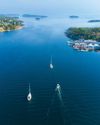
SPECIAL REPORT EXTENDED CRUISING IN THE BALTIC
Sweden offers cruisers a warm welcome for winter - Janneke Kuysters has advice on how to boost your sailing time in the region

NIKKI HENDERSON
SEARCHING FOR MORE SPEED? BEFORE TINKERING WITH TINY ADJUSTMENTS, MAKE SURE YOU'VE GOT THE BASICS RIGHT THE POWER DRIVING THE BOAT

MATTHEW SHEAHAN
WHAT WILL THE BOATS OF THE 38TH AMERICA'S CUP LOOK LIKE? THAT'S THE $20 MILLION QUESTION IF BRITAIN OR NEW ZEALAND DECIDE TO DEPART FROM THE AC75
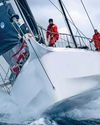
60-knot squalls hit Middle Sea Race
The 45th running of the Mediterranean offshore, the Rolex Middle Sea Race, saw a spectacularly random mix of conditions - even for a race which is famed for its variable weather patterns.
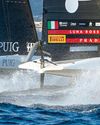
Italy win first Women's Cup
The first ever Women's America's Cup was won by Luna Rossa Prada Pirelli after a single, twoboat shoot-out final on 12 October.

'Three-peat' for ETNZ
As Defender, Emirates Team New Zealand came into this year's 37th America's Cup as clear favourites. But the Kiwi camp has far more than just the structural advantage of being the ones that wrote the Protocol for the competition, and the originators of the AC75 concept.
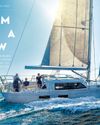
ROOM WITH A VIEW
SWEDISH DESIGNER GABRIEL HEYMAN POURED A LIFETIME OF IDEAS INTO THIS PILOT SALOON CRUISER, WHICH INCLUDES ARGUABLY THE LARGEST COCKPIT AVAILABLE AT THIS SIZE

LIVING HISTORY
THE ICONIC SEASON-CLOSING REGATTA LES VOILES DE SAINT TROPEZ WAS AN IMMERSIVE HISTORY LESSON FOR CROSBIE LORIMER
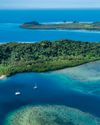
CHANGE OF PLAN
LEAVING AUSTRALIA, MARIANNE URTH NEVER PLANNED TO MAKE LANDFALL IN THE ISLANDS OF VANUATU, BUT THE EXPERIENCE WAS MAGICAL